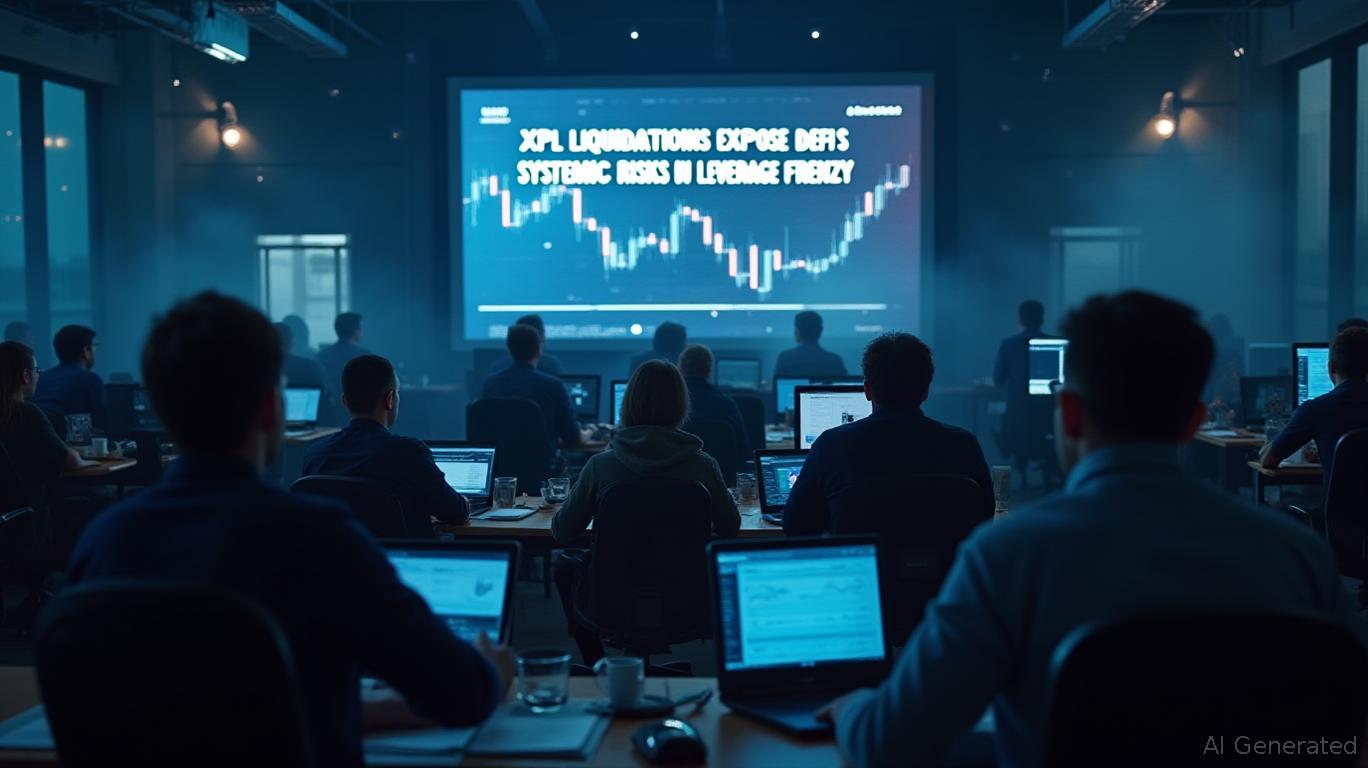"XPL Liquidations Reveal Deep-Rooted DeFi Vulnerabilities Amid Leverage Surge"
- XPL liquidations hit $31.24M on Sept. 27, second only to Ethereum, revealing leveraged trading volatility in emerging tokens. - Technical glitches at Aster DEX and coordinated whale attacks on Hyperliquid triggered $162M in cascading liquidations, exposing DeFi platform vulnerabilities. - XPL's $2.9B TVL surge post-launch contrasted with 60% price spikes and 55M+ daily liquidations, reflecting speculative frenzy and retail bearishness. - Repeated manipulation incidents prompted calls for stricter DeFi sa

According to Coinglass,
The surge in XPL liquidations was attributed to both technical malfunctions and deliberate market manipulation. On September 25, Aster DEX, a decentralized exchange, encountered a misconfigured index in its XPL perpetual contract, causing the price to briefly spike to $4 before returning to normal. This irregularity resulted in about $32 million in long positions being liquidated, leading Aster to fully compensate affected users with
Industry observers pointed out that the spike in XPL liquidations mirrors broader patterns in speculative trading, particularly with newly introduced tokens. Plasma’s XPL, which debuted in late August, amassed over $2.9 billion in total value locked (TVL) within its first day, fueled by airdrop campaigns and large investor participation. Major holders, including wallets with tens of millions in
The wave of XPL liquidations also exposed structural weaknesses in decentralized finance (DeFi) systems. In March 2025, Hyperliquid’s JELLY attack saw a $4.5 million short position manipulated to inflict a $12 million loss on its insurance vault (HLP), revealing the dangers of isolated price feeds and inadequate liquidity protections. In response, Hyperliquid implemented 10× price caps and began aggregating external data to reduce such risks. Nevertheless, the September XPL incidents showed that leveraged markets are still prone to large-scale manipulation, especially for assets with thin order books. These repeated events have led to calls for tighter position limits and the introduction of circuit breakers to better shield retail traders from predatory tactics.
Looking forward, XPL’s trajectory is closely linked to the ongoing development of the Plasma ecosystem. Supported by investors such as Founders Fund and Bitfinex, the project aims to become a leading Layer 1 blockchain focused on stablecoins. Despite recent volatility, XPL’s price has remained strong, trading at $1.49 and surging 60% in the 24 hours after its launch. Still, analysts warn that early investors with substantial gains may trigger sell-offs, putting downward pressure on the token. Liquidation statistics remain a key tool for traders to gauge market sentiment, as spikes in forced liquidations often precede sharp corrections. As
Disclaimer: The content of this article solely reflects the author's opinion and does not represent the platform in any capacity. This article is not intended to serve as a reference for making investment decisions.
You may also like
Circle issues 500 million USDC on Solana
The probability of OpenSea launching its token this year has risen to 52% on Polymarket.
A suspected BitMine address increased its holdings by 20,532 ETH.